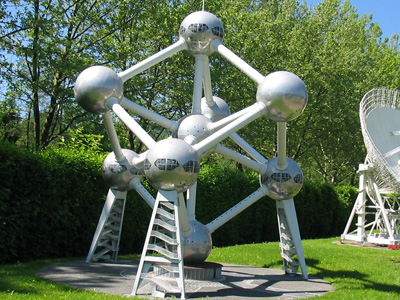
This is a copy of the Atomium monument in Brussels, Belgium, which forms the shape of a unit cell of an iron crystal magnified 165 billion times.
Atomic Structure 3
This Chemistry quiz is called 'Atomic Structure 3' and it has been written by teachers to help you if you are studying the subject at high school. Playing educational quizzes is a user-friendly way to learn if you are in the 9th or 10th grade - aged 14 to 16.
It costs only $12.50 per month to play this quiz and over 3,500 others that help you with your school work. You can subscribe on the page at Join Us
The study of atomic structure forms a large part of high school Chemistry. This quiz looks not only at the numbers and arrangement of protons, neutrons and electrons in atoms, their atomic numbers and their atomic mass, but also at the numbers of electrons in the different shells of atoms and how the electrons in an atom’s outer shell are affected when ions are formed.
Ready for more?
not all...
quizzers. Try to win a coveted spot on our Hall of Fame Page.







